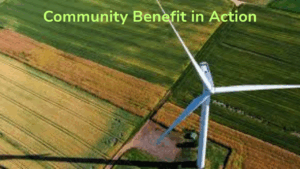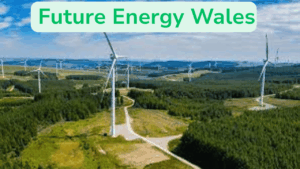The UK stands at the forefront of one of the most critical transformations in modern history: the energy transition. As the country pushes toward its net-zero targets, innovative energy solutions are reshaping how power is produced, stored, distributed, and consumed. With rising energy demands, climate commitments, and the need for reliable and affordable power, the UK is embracing new technologies and smarter systems to build a cleaner, more resilient energy future.

This blog explores the most impactful innovations driving the UK’s energy transition, their potential to reshape industries, and how they will affect households and businesses alike.
Why Innovation Matters in the UK Energy Transition?
Energy transition is about more than just replacing fossil fuels with renewables. It’s about building a flexible, efficient, and sustainable system that can balance clean power generation with consumer demand. The UK’s goals are ambitious: reduce carbon emissions, keep energy affordable, and ensure energy security. Achieving these targets requires more than just new technology; it demands coordinated strategies, investment in infrastructure, and consumer participation.

1. Smarter Renewable Energy Expansion
The UK is already a global leader in offshore wind energy. The country’s wind farms supply a growing share of electricity, helping reduce dependence on fossil fuels. However, as renewable capacity expands, integrating intermittent sources like wind and solar into the grid becomes a bigger challenge.
The solution lies in smarter energy systems grid flexibility, better forecasting, and advanced storage technologies. By combining renewable generation with robust grid infrastructure and energy storage, the UK can ensure a stable and reliable energy supply, even when the wind isn’t blowing or the sun isn’t shining.

2. Energy Storage
Renewables alone cannot guarantee a stable energy supply. This is where energy storage comes in. Batteries offer fast-response solutions for short-term fluctuations, while long-duration storage systems such as pumped hydro, flow batteries, hydrogen storage, and compressed air can handle longer gaps in supply.
Energy storage is becoming one of the most crucial pillars of the UK’s energy transition. By storing excess renewable energy and releasing it when needed, the UK can stabilize the grid, reduce energy waste, and cut overall system costs.

3. Low-Carbon Heating
One of the biggest hurdles to decarbonising the UK’s energy system is home heating. Many households still rely on gas boilers, which contribute significantly to emissions. The transition to low-carbon heating is gaining momentum through the adoption of air- and ground-source heat pumps.
Heat pumps work by extracting heat from the air or ground and transferring it into homes, making them far more energy-efficient than traditional boilers. When combined with proper insulation, smart thermostats, and time-of-use electricity tariffs, they can help homeowners cut both emissions and energy bills. The UK government is also offering incentives to accelerate the adoption of heat pumps, making them more accessible to households across the country.

4. Hydrogen
Hydrogen is emerging as a game-changer for sectors that are difficult to electrify, such as heavy industry, shipping, and long-haul transport. It can also serve as a large-scale energy storage medium, helping to balance seasonal energy demands.
Green hydrogen, produced using renewable electricity, and low-carbon hydrogen, produced with carbon capture, are expected to play a major role in the UK’s energy strategy. By building hydrogen production hubs, pipelines, and storage facilities, the UK can develop a new clean energy industry that supports jobs, innovation, and energy security.
5. Carbon Capture, Usage, and Storage (CCUS)
While renewable energy and electrification can decarbonise many areas, some emissions will remain unavoidable particularly in heavy industries. Carbon Capture, Usage, and Storage (CCUS) technologies provide a practical solution.
CCUS involves capturing carbon dioxide from industrial processes or power generation and storing it underground or reusing it in other applications. The UK is investing in industrial clusters where multiple businesses can share infrastructure for carbon transport and storage. This not only lowers costs but also accelerates large-scale decarbonisation of industrial regions.
6. Smarter Energy Markets and Consumer Participation
The energy transition isn’t just about big technologies and large-scale infrastructure. It also relies on everyday consumers and businesses making smarter energy choices. Smart meters, flexible tariffs, and demand-side response programs allow households and companies to adjust their energy usage based on supply and price.
For example, by running appliances during off-peak hours when renewable energy is abundant, consumers can lower their energy bills and reduce strain on the grid. Businesses can also participate by using energy storage, flexible operations, or smart building technologies.
7. Digitalisation and Artificial Intelligence in Energy
Digital technologies and artificial intelligence are revolutionising the energy sector. They enable better forecasting for wind and solar output, optimise energy storage use, and automate demand response systems.
AI can also manage energy flows more efficiently across buildings, electric vehicles, and industrial operations, ensuring that energy is used at the right time and place. These smart systems reduce the need for costly backup generation and make renewable energy more reliable.
What Does This Means for UK Homes and Businesses?
For households, the energy transition means more efficient heating solutions, lower bills through smart energy use, and greater access to clean power. For businesses, it creates opportunities to innovate, cut costs, and invest in sustainable solutions.
Sectors like hydrogen production, CCUS, and renewable energy infrastructure are expected to create thousands of new jobs, support economic growth, and strengthen energy security. Regions that invest early in these technologies are likely to become the clean energy hubs of the future.
Overcoming Challenges Through Innovation
While progress is strong, challenges remain. Upgrading grid infrastructure, addressing skills shortages, and securing investment for large-scale projects are essential steps. Consistent government policy and long-term planning will be key to overcoming these barriers.
The transition also needs public engagement. Encouraging consumers to adopt clean technologies, participate in energy flexibility programs, and invest in efficiency improvements will accelerate change.
Conclusion
The UK’s energy future will not depend on a single innovation but on the integration of multiple solutions: renewables, storage, hydrogen, CCUS, smart grids, and digital technologies. Together, these innovations can create a cleaner, more reliable, and more affordable energy system for everyone.
The next decade will be decisive. Offshore wind farms, hydrogen hubs, storage facilities, and smarter homes are already taking shape. By investing in innovation today, the UK can lead the global transition to net-zero while ensuring that its economy and communities thrive in a sustainable future.

